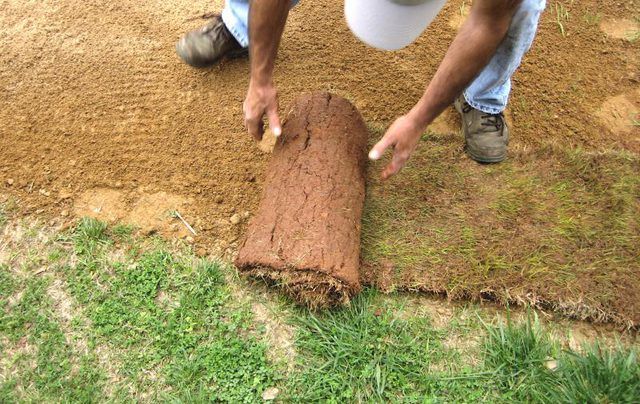Bulbs
Flower Basics
Flower Beds & Specialty Gardens
Flower Garden
Garden Furniture
Garden Gnomes
Garden Seeds
Garden Sheds
Garden Statues
Garden Tools & Supplies
Gardening Basics
Green & Organic
Groundcovers & Vines
Growing Annuals
Growing Basil
Growing Beans
Growing Berries
Growing Blueberries
Growing Cactus
Growing Corn
Growing Cotton
Growing Edibles
Growing Flowers
Growing Garlic
Growing Grapes
Growing Grass
Growing Herbs
Growing Jasmine
Growing Mint
Growing Mushrooms
Orchids
Growing Peanuts
Growing Perennials
Growing Plants
Growing Rosemary
Growing Roses
Growing Strawberries
Growing Sunflowers
Growing Thyme
Growing Tomatoes
Growing Tulips
Growing Vegetables
Herb Basics
Herb Garden
Indoor Growing
Landscaping Basics
Landscaping Patios
Landscaping Plants
Landscaping Shrubs
Landscaping Trees
Landscaping Walks & Pathways
Lawn Basics
Lawn Maintenance
Lawn Mowers
Lawn Ornaments
Lawn Planting
Lawn Tools
Outdoor Growing
Overall Landscape Planning
Pests, Weeds & Problems
Plant Basics
Rock Garden
Rose Garden
Shrubs
Soil
Specialty Gardens
Trees
Vegetable Garden
Yard Maintenance
The Best Time to Plant Sod in Florida
The Best Time to Plant Sod in Florida. Greatly influenced by the ocean that surrounds the peninsula, Florida is one of the warmest states. It's divided into three climate zones, with U.S. Department of Agriculture plant hardiness zones going from 8 in the north to 9 in central Florida and to 10a to 11a in the south. Average annual rainfall varies...

Greatly influenced by the ocean that surrounds the peninsula, Florida is one of the warmest states. It's divided into three climate zones, with U.S. Department of Agriculture plant hardiness zones going from 8 in the north to 9 in central Florida and to 10a to 11a in the south. Average annual rainfall varies from about 40 to 62 inches. Warm-season sod grasses are best suited to Florida since they endure heat and humidity.
St. Augustine Grass
Probably the most commonly planted sod in Florida, St. Augustine grass (Stenotaphrum secundatum) is hardy in USDA zones 9 through 11. Plant sod in spring or summer when the grass is actively growing. Growth slows in fall and winter. Although you can plant St. Augustine grass at other times, in north Florida avoid cold winter months or hot, dry summer periods. "Floratam" is the most common variety, giving a dense, green lawn in warm months. When dormant, grass turns brown. It requires full sun. "Palmetto" and "Delmar" tolerate partial shade. St. Augustine grass tolerates brackish water and sea spray, so it's suited for beachside lawns.
Bermuda Grass
Bermuda grass sod (Cynodon dactylon) is best installed from April through September, although it can be planted at other times with proper procedures. Hardy in USDA zones 8 through 11, the lawn browns in fall and winter. Bermuda grass tolerates foot traffic, drought and saline conditions but needs frequent maintenance such as dethatching and mowing. "Floratex" stays green longer than other varieties.
Centipede Grass
Not as fast-growing as other lawn sods, centipede grass (Eremochloa ophiuroides) is suited to central and northern Florida. It's the most used lawn grass in the Florida Panhandle. Spring or summer installation is best, since the lawn becomes brown and dormant in winter. The light-green, medium-textured grass is low-maintenance and tolerates acidic soils and partial shade. Growing in USDA zones 7 through 10, several cultivars exist.
Bahia Grass
Bahia grass (Paspalum notatum) has a more open growth habit with deep, extensive roots, suiting it for low-maintenance areas that have limited fertility and irrigation. Best established during spring or early summer, growth slows in the fall. It's suited to central Florida since it does well in acidic soils characteristic of the region. The variety "Pensacola" is most widely used, but "Argentina" has darker green, wider leaves and denser sod. Bahia grass is hardy in USDA zones 9 through 11.
Sod Care
Once dug from the ground, sod roots can quickly dry out and die. Prevent this by getting sod on the day you're going to install it and keeping it sprinkled with water before and during installation. Well before planting sod, clear the site of all plant material, rocks and stones, till the area and install an irrigation system. Hand-rake the soil for a smooth surface and water the day before so it's moist. Lay sod in a straight line along the length of the site, staggering pieces so they don't end at the same place, putting edges firmly against each other. Immediately after installation, go over the sod with a lawn roller.
For the first seven days, sprinkle the sod briefly two to three times daily to keep roots moist. As the roots grow into the ground, water the sod less frequently but for longer periods.